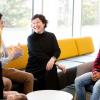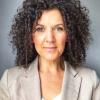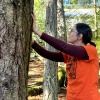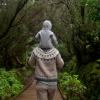
Dr. Deb Saucier, VIU President and Vice-Chancellor, shares her vision for the university during her installation at the Snuneymuxw First Nation Longhouse on November 15, 2019.
November 26, 2019 - 5:15pm
Dr. Deb Saucier, VIU President and Vice-Chancellor since July 2019, was formally endowed with the powers and responsibilities of office in a ceremony at the Snuneymuxw First Nation Longhouse in Cedar on November 15.
A regional institution such as Vancouver Island University (VIU) can change what it means to be a university, challenge longstanding perceptions on who goes and what can be taught there, and redefine how we understand and value people.
Dr. Deb Saucier, VIU’s new President and Vice-Chancellor, shared this vision at her installation ceremony on Friday, November 15 at the Snuneymuxw First Nation Longhouse in Cedar, near Nanaimo.
“If not us, who will do it?” she stated during her speech, which inspired a standing ovation. “Do you want to dream big? Let’s be different.”
An installation in a university setting is the ceremony during which a president is formally endowed with the powers and responsibilities of office. It was also an opportunity for Saucier, who started in her new role in July, to share what she hopes to accomplish during her five-year term.
“I am struck by the common belief that ‘good’ universities are those that are exclusive,” she told the crowd of approximately 350 VIU employees, community members, government officials and representatives from post-secondary institutions across the country who came to the event. “What if we turned that notion on its head and thought instead that excellent universities were those which invited everyone in? That excellence was defined by how well the members of our community succeeded, not by how many were weeded out? VIU is that kind of university and we are committed to inclusion and promoting the success of our people, our communities and the nations that we serve.”
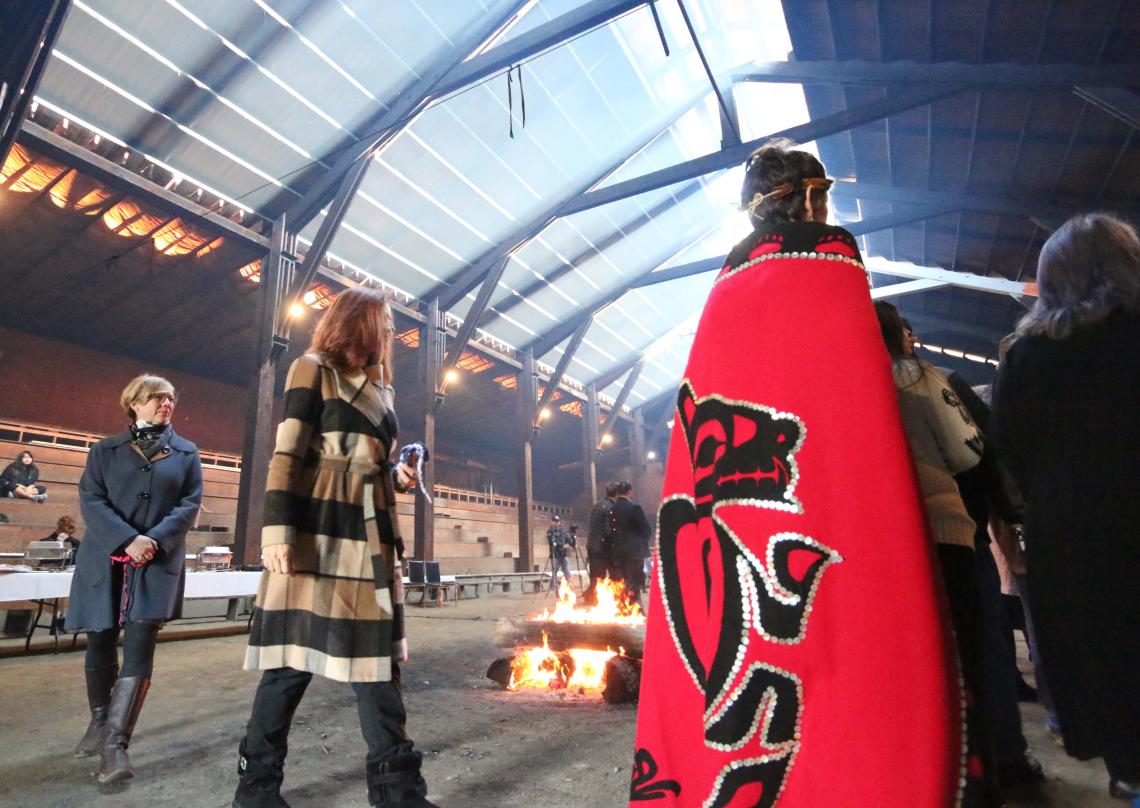
The installation was held at the Longhouse, both in recognition of the longstanding and respectful relationship VIU has with the Snuneymuxw peoples and as an illustration to VIU’s commitment to working with the communities it serves, explained Saucier.
“This is a tangible demonstration that we have a commitment to community, we will bring our people to community. It’s a two-way street and we will walk together with the communities we serve,” said Saucier, adding that what makes VIU special is the people who work there and dedicate so much to checking in with one another, helping students succeed and figuring out ways to solve local problems together.
“Our strength is in our desire to lift each other up, to celebrate our successes and to help each other when we need it,” she said. “We’re a different kind of place, this university that puts students first and in doing so, celebrates employees and recognizes each person’s critical part in this critical mission.”
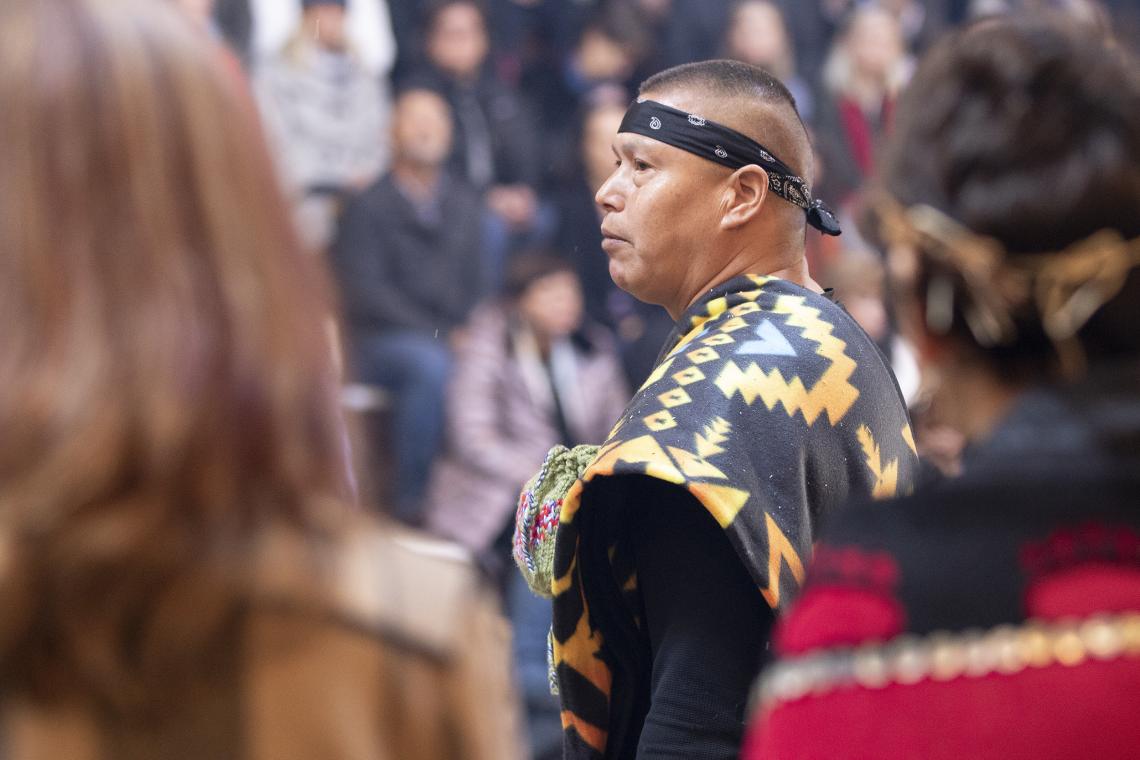 The installation ceremony was the first time in the history of his peoples that an event like this has been held there, said Snuneymuxw First Nation member Darren Good, who served as the Shqwi Qwal (or Speaker) for the occasion.
The installation ceremony was the first time in the history of his peoples that an event like this has been held there, said Snuneymuxw First Nation member Darren Good, who served as the Shqwi Qwal (or Speaker) for the occasion.
Jointly hosted by VIU and Snuneymuxw, the ceremony incorporated Indigenous protocols such as the calling of witnesses to take the story of what happened that day back to people in their home communities, and asking speakers to come forward to reflect on the importance of the occasion.
“It’s about building bridges,” explained Good. “It’s for the future of our children who are going to go on to university and get an education.”
Snuneymuxw First Nation Chief Mike Wyse Xumtilum says the joint hosting of the installation at the Longhouse represents the VIU and Snuneymuxw communities’ commitment to walking together.
“We’ve come together in a good way and we want that relationship to grow,” he said.
Makenzie Leine, Chair of VIU’s Board of Governors, and Louise Mandell, QC, VIU Chancellor, participated in the installation ceremony, which involved the reading of a pledge, and placing the robe and stole on the president.
Leine explained to the audience that the board is responsible for hiring the president based on recommendations from the Presidential Search Advisory Committee made up of students, employees, board members and others. She said the selection process of VIU’s new president was deliberative and carefully thought out, resulting in Saucier as the successful candidate.
“I’m excited about her vision and I trust in her collaborative, responsive and innovative leadership,” said Leine.
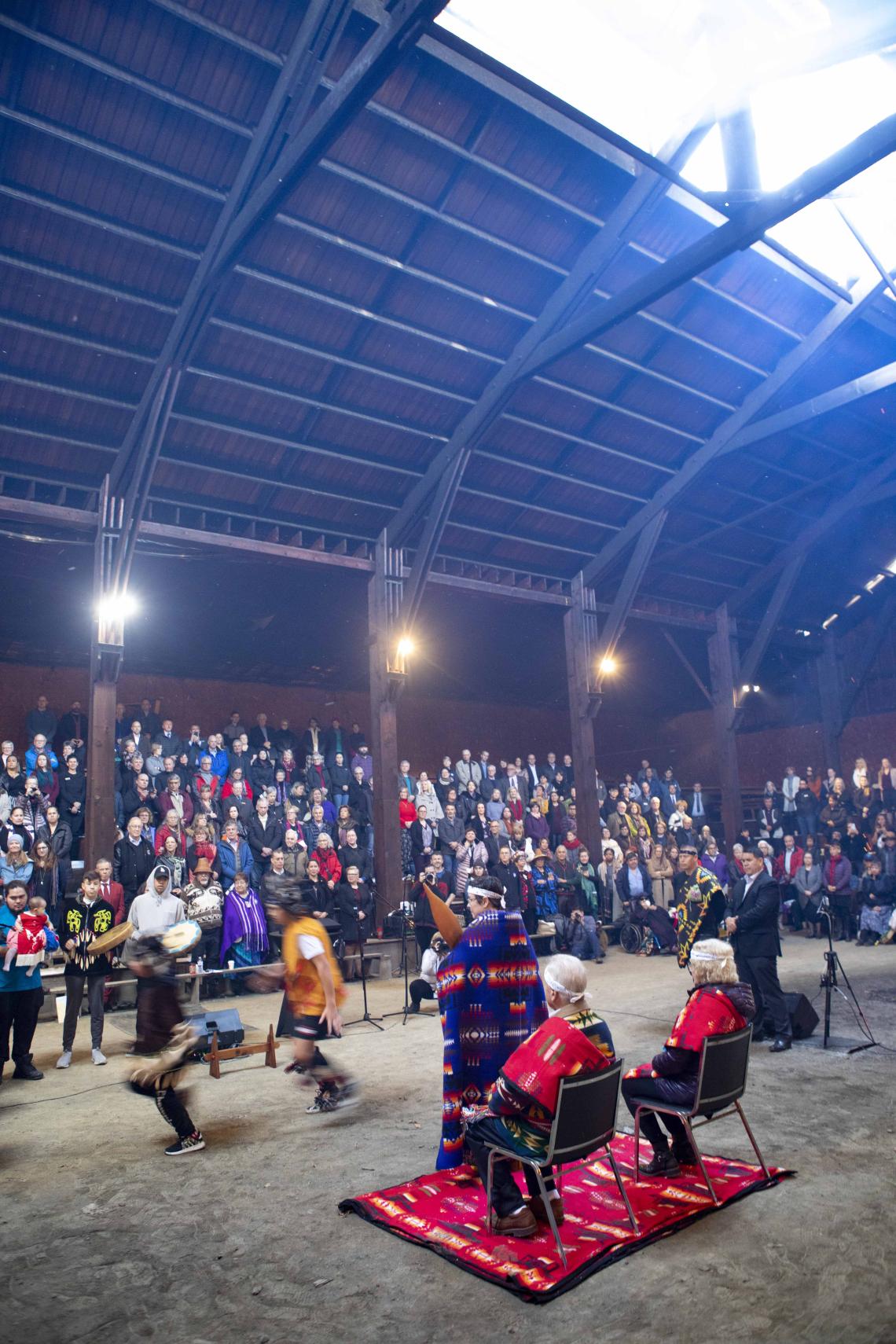 Mandell said the whole event is a step in the never-finished process of education and reconciliation.
Mandell said the whole event is a step in the never-finished process of education and reconciliation.
“We draw from the wisdom of Indigenous laws and traditions that instruct us to ask how our actions today will impact generations into the future,” she said. “This day is part of VIU’s evolution and growth. Deb is a role model – she offers testament to the idea that it is possible to overcome invisibility, the bias of patriarchy and colonial barriers, get an education and lead a university. Others will look and say, ‘If she can do it, so can I.’”
Saucier reiterated this point about the transformative power of education, reminding people of the power of a post-secondary education by using her own story as an example.
“Education is key to a good and independent life,” she said. “We will continue to push the envelope on what is possible to make access a part of our DNA, because access is the key to the democratization of higher education – something that is a fundamental human right, especially in the 21st Century.”
-30-
MEDIA CONTACT:
Jenn McGarrigle, External Communications Advisor, Vancouver Island University
P: 250.740.6559 | C: 250.619.6860 | E: Jenn.McGarrigle@viu.ca | T: @VIUNews
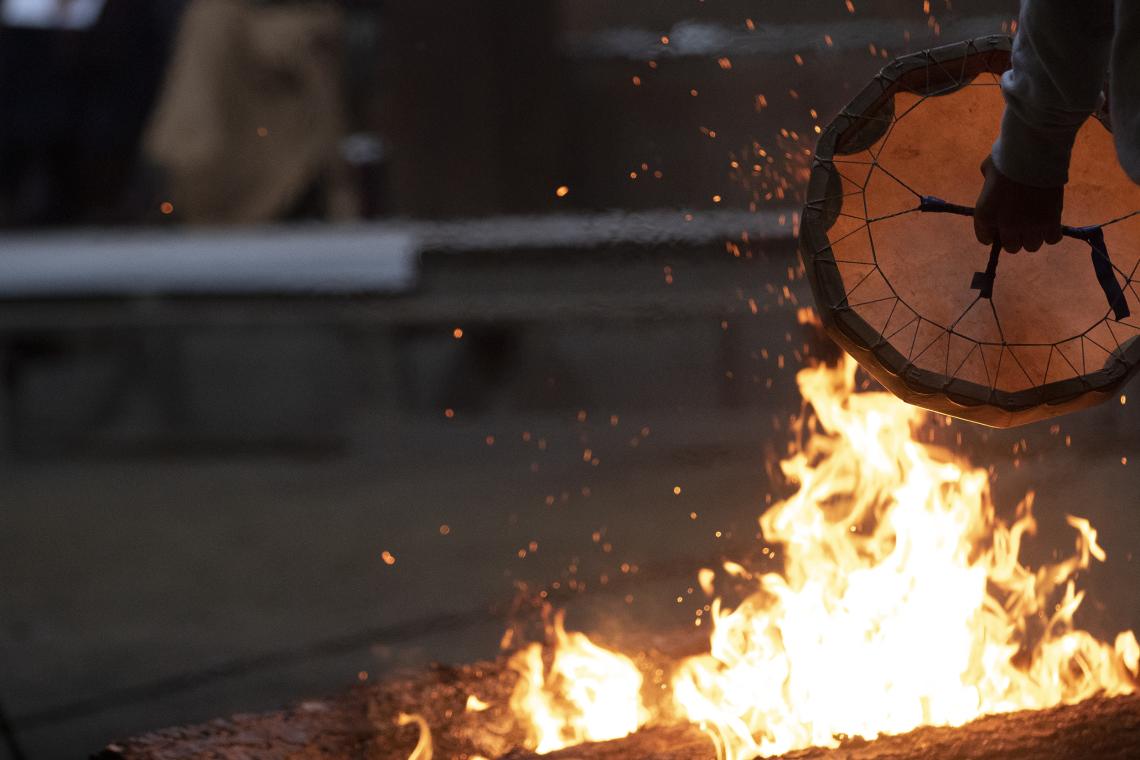
Tags: Community Engagement | Indigenous | Reconciliation | Teaching and Learning

